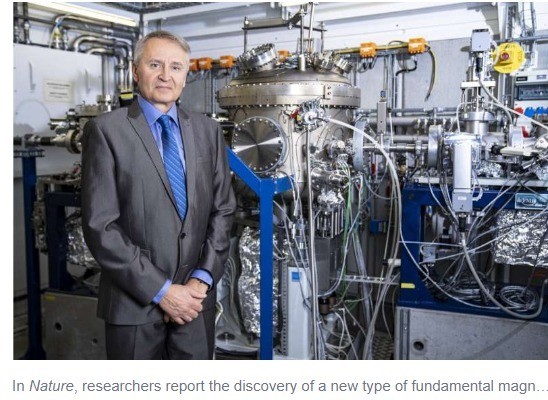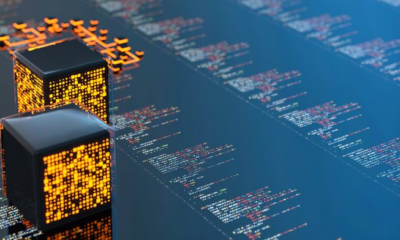Reports
A Valentine’s Day Gift to Science from Nature: Altermagnetism

Today’s roundup of science articles at phys.org includes an early look at a potentially revolutionary discovery in Nature of a new third form of magnetism — which the authors are calling altermagnetism — that could have profound implications for the future of science and technology.
Now you may be thinking at this point, “a third form of magnetism? I didn’t even know there was a second” — but not to fear, the phys.org article provides a very useful and fairly easy to understand explanation of the different types:
Conservative group admits it has zero evidence of Georgia ballot stuffing
Magnetism is a lot more than just things that stick to the fridge. This understanding came with the discovery of antiferromagnets nearly a century ago. Since then, the family of magnetic materials has been divided into two fundamental phases: the ferromagnetic branch known for several millennia and the antiferromagnetic branch.
The experimental proof of a third branch of magnetism, termed altermagnetism, was made at the Swiss Light Source SLS, by an international collaboration led by the Czech Academy of Sciences together with Paul Scherrer Institute PSI.
The fundamental magnetic phases are defined by the specific spontaneous arrangements of magnetic moments—or electron spins—and of atoms that carry the moments in crystals.
Ferromagnets are the type of magnets that stick to the fridge: here spins point in the same direction, giving macroscopic magnetism. In antiferromagnetic materials, spins point in alternating directions, with the result that the materials possess no macroscopic net magnetization—and thus don’t stick to the fridge. Although other types of magnetism, such as diamagnetism and paramagnetism have been categorized, these describe specific responses to externally applied magnetic fields rather than spontaneous magnetic orderings in materials.
Altermagnets have a special combination of the arrangement of spins and crystal symmetries. The spins alternate, as in antiferromagnets, resulting in no net magnetization. Yet, rather than simply canceling out, the symmetries give an electronic band structure with strong spin polarization that flips in direction as you pass through the material’s energy bands—hence the name altermagnets. This results in highly useful properties more resemblant to ferromagnets, as well as some completely new properties.
This third magnetic sibling offers distinct advantages for the developing field of next-generation magnetic memory technology, known as spintronics. Whereas electronics makes use only of the charge of the electrons, spintronics also exploits the spin-state of electrons to carry information.
The article goes on to describe how this third form of magnetism was initially theorized and then confirmed through experimental observations at the Swiss Light Source (SLS) by an international collaboration led by the Czech Academy of Sciences together with Paul Scherrer Institute (PSI). The whole piece is well worth perusing, but one of the most interesting details to emerge is the specific material used in their experimental observations:
The discovery was made in crystals of manganese telluride, a well-known simple two-element material. Traditionally, the material has been regarded as a classic antiferromagnet because the magnetic moments on neighboring manganese atoms point in opposite directions, generating a vanishing net magnetization.
However, antiferromagnets should not exhibit lifted Kramers spin degeneracy by the magnetic order, whereas ferromagnets or altermagnets should. When the scientists saw the lifting of Kramers spin degeneracy, accompanied by the vanishing net magnetization, they knew they were looking at an altermagnet.
OK, this may be a little beyond the technical comprehension of most of us, but this is now the third different telluride I’ve encountered recently that may have a role to play in superconductivity. Physics really is quite fascinating!
Source : https://www.dailykos.com/stories/2024/2/14/2223563/-A-Valentine-s-Day-Gift-to-Science-from-Nature-Altermagnetism?utm_campaign=recent







